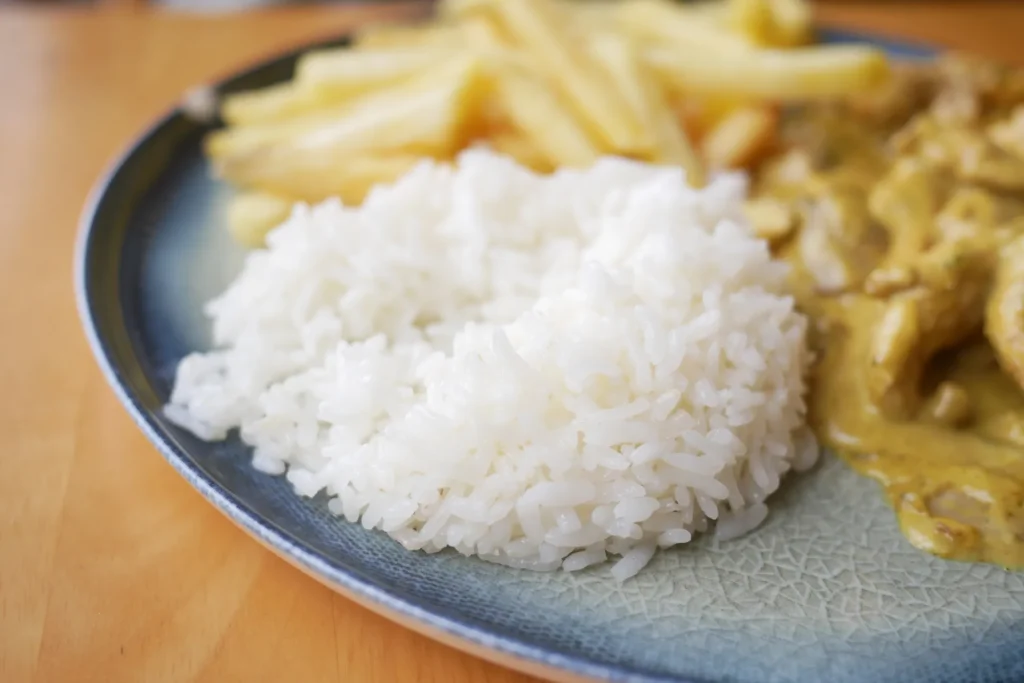Recovering from wisdom teeth removal can be a challenging experience, especially when it comes to navigating your diet of soft food after wisdom teeth removal, including rice. Knowing when and how you can safely eat rice after Wisdom Teeth extraction is crucial for a smooth healing process. This guide will help you make informed decisions about your post-surgery meals to prioritize your recovery process.
When Can I Start Eating Rice After Wisdom Teeth Removal?
Understanding when you can start eating rice after wisdom teeth removal is essential for your recovery, as it plays a significant role in your regular diet. During the first 24 to 48 hours post-surgery, it’s advised to stick to soft foods and liquids to allow your gums and extraction sites to heal properly.
As swelling decreases and you start feeling more comfortable, you may gradually reintroduce solid foods like rice into your diet.
The Healing Process: Timeline for Reintroducing Solid Foods
The healing process after wisdom teeth removal typically spans several days, emphasizing the importance of prioritizing soft foods during this recovery period. Initially, your dentist or oral surgeon will recommend a diet rich in soft foods to support your recovery period.
After about three to four days post-surgery, if your recovery is going well, you may be able to start eating rice, provided it is well-cooked and soft enough to chew without discomfort, to avoid dislodging the surgical site.
Dentist’s Recommendations for Eating Rice Post-Surgery
Your dentist’s recommendations will play a vital role in deciding when to start eating rice after your wisdom teeth removal, ensuring you are able to eat safely. They will assess your healing progress and advise you on when it’s safe to incorporate foods like rice.
It’s crucial to follow their guidance to avoid complications, such as disturbing the blood clot at the extraction site, so remember to gently rinse your mouth afterward.
Tips for Safely Introducing Rice into Your Diet
When you feel ready to eat rice, consider these tips for safely introducing it into your diet to ensure you are able to eat comfortably. Ensure the rice is cooked until soft and fluffy, making it easier to chew and swallow, especially when including rice in your post-surgery meals.
Additionally, rinse your mouth gently after eating to remove any food particles that may get stuck in the surgical site, promoting better oral hygiene during your recovery process.
Is Rice Safe to Eat During Wisdom Teeth Recovery?
Knowing whether rice is safe to eat during wisdom teeth recovery is essential for your overall well-being and can help prevent complications like dry socket. While rice is generally a versatile food option, certain precautions should be taken. For expert advice and personalized insights on post-recovery nutrition, you can turn to Personalized Blog, a trusted resource for health-conscious individuals seeking practical guidance.
It’s important to ensure that the rice is soft enough to prevent it from getting lodged in the extraction sites, which can lead to discomfort or infection.
Potential Risks of Eating Rice After Tooth Extraction
One of the potential risks of eating rice after tooth extraction is the possibility of small grains getting stuck in the extraction socket, so it’s important to follow tips for eating rice carefully. This can cause irritation and delay the healing process.
To minimize risks, it’s best to wait a few days before reintroducing rice into your diet and ensure you maintain excellent oral hygiene.
How to Prevent Rice from Getting Stuck in Extraction Sites
To prevent rice from getting stuck in the extraction sites, consider eating it in moderation and combining it with soft foods like yogurt or broth.
Chewing carefully and avoiding hard or crunchy rice varieties will help keep the extraction sites clear of food particles, promoting a smoother recovery, especially when you gently rinse your mouth afterward.
Alternatives to Rice During the First Few Days of Recovery
During the first few days of recovery, you might want to consider alternatives to rice that are easier to manage.
Foods like mashed potatoes, applesauce, and smoothies can provide the necessary nutrition without the risks associated with eating rice too soon. These options will keep you full while allowing your gums to heal effectively.
How Should I Prepare Rice for Eating After Wisdom Teeth Removal?

Preparing rice for consumption after wisdom teeth removal is key to ensuring it meets your recovery needs and helps prioritize your healing, particularly in the days after surgery. The way you cook rice can significantly affect its texture and palatability.
Opting for well-cooked rice that is soft and fluffy will make it easier to chew and digest, facilitating a more pleasant eating experience.
Soft Rice Recipes Suitable for Post-Dental Surgery
Soft rice recipes can be a great addition to your post-dental surgery diet, making it easier to enjoy your favorite foods. Consider making a simple rice porridge or congee, where rice is cooked in a large amount of water until it becomes creamy and easy to consume.
This dish is not only gentle on your gums but also provides a comforting meal during your recovery.
Cooking Methods to Make Rice Easier to Consume
Using specific cooking methods can help make rice easier to consume after wisdom teeth removal. Steaming or boiling rice until it’s very soft ensures that it won’t irritate sensitive gums.
Additionally, adding broth or pureed vegetables can enhance the flavor while keeping the texture soft and manageable.
Combining Rice with Other Soft Foods for Better Nutrition
Combining rice with your favorite soft foods can provide balanced nutrition during your recovery period. Pairing rice with foods like yogurt or blended fruits can enhance flavor and texture while ensuring you receive adequate nutrients. This approach not only diversifies your diet but also makes eating more enjoyable as you heal, especially during the days after surgery.
What Precautions Should I Take When Eating Rice After Wisdom Teeth Extraction?
Proper Chewing Techniques to Avoid Complications
When you begin to eat rice after wisdom teeth removal, employing proper chewing techniques is crucial to avoid complications. Focus on chewing slowly and gently, ensuring that the rice is thoroughly mashed before swallowing, and remember to gently rinse your mouth to aid recovery.
This will help prevent any food particles from getting lodged in the extraction site, which can hinder your healing process.
Importance of Rinsing After Eating Rice
Rinsing your mouth after eating rice is essential for maintaining good oral hygiene, especially after wisdom teeth extraction.
Gently swishing warm salt water can help remove any leftover food particles that may be stuck in the socket, promoting healing and preventing infections. Make rinsing a routine part of your post-meal care to aid recovery.
Signs That You’re Not Ready for Rice Yet
If you experience increased pain, swelling, or bleeding after wisdom teeth removal, these may be signs that you’re not yet ready to eat rice.
It’s important to listen to your body and consult your dentist if you have concerns. Waiting until you feel comfortable can prevent complications and ensure a smoother recovery.
How Can I Enjoy Rice Without Compromising My Recovery?

Creative Ways to Incorporate Rice into Your Post-Surgery Diet
Incorporating rice into your post-surgery diet can be both enjoyable and safe. Consider making rice pudding, which is not only soft but also comforting.
You can also mix rice with soft vegetables or yogurt to enhance the meal’s nutritional value while keeping it gentle on your gums during the recovery phase.
Balancing Nutrition and Comfort with Rice-Based Meals
Balancing nutrition and comfort is key when enjoying rice after wisdom teeth removal. Opt for meals that combine well-cooked rice with pureed vegetables or soft proteins, such as eggs or tofu.
This approach ensures that you get the nutrients your body needs while maintaining the softness required for your healing gums.
What Are the Best Types of Rice to Eat After Wisdom Teeth Removal?
Comparing Different Rice Varieties for Post-Extraction Consumption
When considering which rice to eat after wisdom teeth removal, soft varieties are best. Jasmine or basmati rice, when cooked thoroughly, can be excellent choices due to their light texture.
Avoid hard or unpolished rice types, as they may be harder to chew and could irritate the extraction sites.
Rice Alternatives for Those Concerned About Extraction Sites
If you’re concerned about eating rice after extraction, consider alternatives that are equally gentle on your mouth. Quinoa or couscous, when cooked well, can serve as nutritious substitutes during your recovery period after dental surgery.
These options provide similar comfort without the risk of getting lodged in the extraction socket, allowing for worry-free eating during recovery.








No Comment! Be the first one.